* (restored)
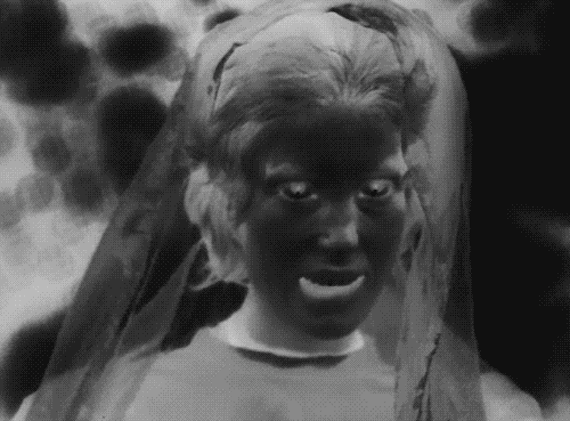
‘All over the Spanish-speaking world however, much experimental film has been made, generating on both sides of the Atlantic a surrealist-inflected historical avant-garde, ‘60s formal innovation in the interest of political militancy, a Super 8 underground of the ‘70s, and the contemporary proliferation of work enabled by video technologies. Several DVD collections of experimental film have recently been released by the Barcelona-based Cameo Media, a distributor that specializes in independent and experimental film. Unquestionably the most invaluable of these, the five-disc Val del Omar: Elemental de España, is dedicated to the works of the unique solitary inventor-artist José Val del Omar, the most notable of which is the formidable Tríptico elemental de España (Elementary Triptych of Spain, shot between 1953 and the mid-‘60s), without a doubt the most ambitious project in Spanish cinema history and one referred to by Amos Vogel in Film as a Subversive Art as “an explosive, cruel work of the deepest passion…nameless terror and anxiety…one of the great unknown works of world cinema.”
‘The Tríptico is a series of three “elementales,” (the name would translate as “elementary”), which Val del Omar proposed as a cinematic genre distinct from the documentary: Aguaespejo granadino (Water-Mirror of Granada, 1955) Fuego en Castilla (Fire in Castile, 1960), and Acariño galáico (Galician Caress, begun in 1961 and completed posthumously in 1995 from Val del Omar’s footage, recordings, and notes). Parts of the Tríptico won awards at the Cannes, Bilbao, and Melbourne film festivals in the late ‘50s and early ‘60s before disappearing from view for decades, noticed only by such diligent UFO-spotters as Vogel. Since the 1980s the films have occasionally been screened theatrically, most notably opening a 1982 retrospective of Spanish experimental film at the Centre Pompidou and inaugurating the Filmoteca de Andalucía in 1989, which has since recovered and restored several of Val del Omar’s earlier documentaries.
‘Val del Omar’s cultural formation took place in the intellectual ferment of the Granada-based avant-garde of the ‘20s. He was a neighbour of the composer Manuel de Falla and a friend of Federico García Lorca, both central figures of Spain’s modernist cultural flowering. During the years of the Spanish Republic, he worked with the misiones pedagógicas (teaching missions), a state-run program that brought modern culture and learning to rural populations still dominated by large landowners and the Church, challenging the latter’s monopoly on truth. The misiones’ project included the use of cinema as a pedagogical instrument, but Val del Omar—a utopian modernist with a pronounced spiritual bent—saw the relatively young medium as a way to foster a collective identity among its viewers, overcoming the principle of individuation that both confined human beings to a brief and tragic temporal existence and hindered social progress.
‘Val del Omar filmed more than 40 silent documentaries and took hundreds of still photos, many of which show peasant faces entranced by the novelty of the cinema. This power of the medium later motivated many of Val del Omar’s inventions and the dream of the grand project he called meca-mística (mechanical mysticism), in which the cinema would serve as a “magic instrument, amplifier of our vision,” making palpable—thanks to its indexicality, the traces of the material brought to the screen by light—what he called the “mystery” or “substance”: that immutable, impalpable omnipresence of elementary matter that makes up the cyclical rhythms of the universe, and that has been displaced by temporal, especially modern, concerns.
‘However, instead of a programmatic rejection of the modern à la the Spanish right, Val del Omar spent much of his life developing a cinematic technology that would facilitate ecstatic transport beyond the limitations of the body’s sensorium. Herein lies the paradox: a humanist—called by fellow restless filmmaker Luis García Berlanga “one of the last survivors of that proud caste of the enlightened that has done so much to dignify scientific and humanistic progress in Spain”—who strove to advance progress not through reason but through a mystic idealism. Val del Omar’s notion of progress is not an advance from the ideal to the material, nor from faith to reason, but is instead an inspired combination of the old plaint of the fall into temporality and the modernist conception of bourgeois individualism as a post-lapsarian condition. Val del Omar’s mysticism addresses both, by seeking to unite man with the divine in nature and with the rest of humanity through the cinema.
‘After the Civil War, Val del Omar’s dreaming found little room in the autarchic Spanish cultural field of the ‘40s and ’50s. Congenitally suspicious of cultural marginality, the Franco regime fomented a monocultural commercial cinema as a natural outgrowth of its militaristic National-Catholic project, vesting all authority in the major national studios and leaving little space for avant-garde experimentation. Unable to film independently, Val del Omar turned to technological experimentation with lenses, sound, and lighting and projection technology as a part of his mystical project, designed to thrust the Tríptico’s viewer into ecstatic transport by eliminating the distance between spectator and spectacle.
‘While working in special effects at the Estudios Chamartín (one of the four major film studios at the time) and on radio programs during the early ‘40s, Val del Omar filed several patents for inventions in audio technology, one of which, the Diáfono sound system, was his first technological step toward the total spectacle of the Tríptico, placing sources both in front of and behind the spectator, each on a separate track, to produce what he called a “dialectical dialogue” of sound. Diaphony was not meant to enhance sonic verisimilitude like the stereophony it predated, but to enhance the power of the cinematic apparatus beyond the mere faithful representation of reality. By 1956, when Aguaespejo granadino played at the Berlinale, Val del Omar had also perfected what he called Desbordamiento Apanorámico de la Imagen (Apanoramic Overflow of the Image), in which a simultaneous projection of abstract images, synchronized with the rhythms of the film’s sound, could be seen on the front and side walls and the ceiling of the theatre, creating in effect a concave screen that engulfed the spectator. He then developed Visión Táctil (Tactile Vision), a system of pulsating light intended to “tactilize” visual perception, which he used for the second part of the Tríptico, Fuego en Castilla. These inventions were designed to release his films from confinement within the edges of the flat screen, a move from the optic toward the haptic and an expansion of perceptive possibilities beyond those normally available to the sensorium, both in the cinema and outside. In the Tríptico, the elemental movement of water, clouds, and light in rhythms normally invisible to the naked eye is made perceptible through Val del Omar’s many inventions, in combination with freeze frames, fast and slow motion, filters, and anamorphic mirrors. The resulting experiences range from solemn to ecstatic, from torment to illumination.
‘The settings of the Tríptico—Galicia, Castile, Granada—trace an arc across the Iberian Peninsula, while the corresponding elements of earth, fire, and water point to a pre-modern epistemology, restoring the Islamic and Jewish others long suppressed by those traditionalists (now restored to power by the Nationalist regime) who promulgated nostalgic imaginings of a homogeneous Catholic national origin. Drawing freely on the writings of the 16th-century mystic San Juan de la Cruz—whose poems and commentaries describe a spiritual journey from a fallen temporal condition, advancing, cycling back, and eventually progressing through “purgation” to the “illuminative” stage—Val del Omar sought to reconcile this older mysticism with the avant-garde project of shocking the spectator out of an anaesthetized modern condition, in the process implicitly scorning the Franco regime’s militaristic mediocrity. Following the sequence of San Juan’s interior journey, the Tríptico was designed to be viewed in the reverse order of its making: from the post-lapsarian state of Acariño galáico, in which the spirit is trapped by the body’s attachment to the material, through the sufferings of the “dark night” of purgation’s painful release from the emotional attachment to the material (Fuego en Castilla), and closing with Aguaespejo granadino’s mystical union with the divine in nature.’ — Matt Losada, Cinemascope
_____
Stills

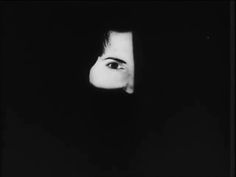
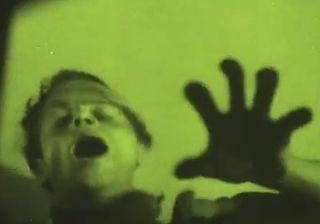







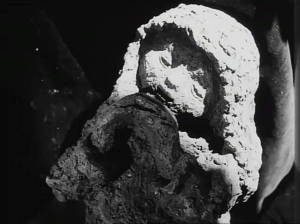



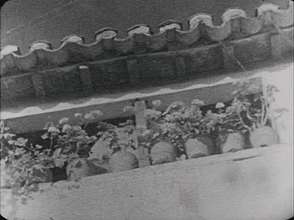



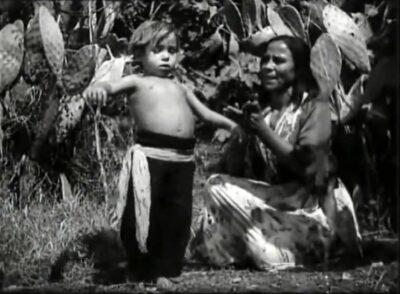


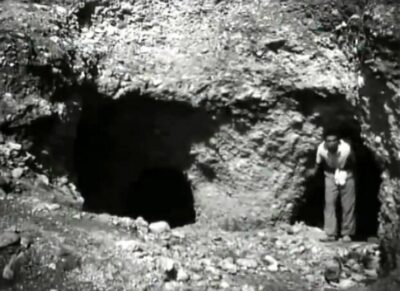


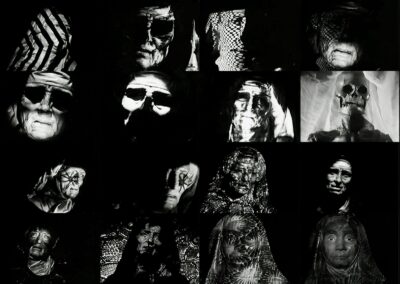




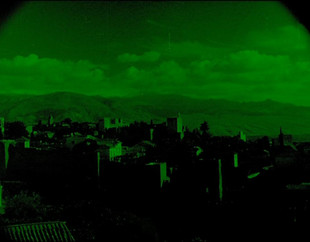










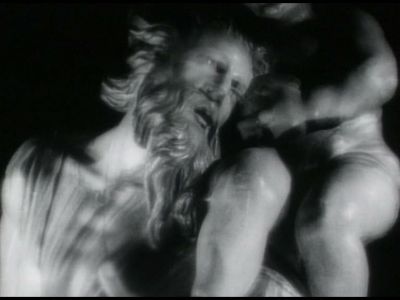
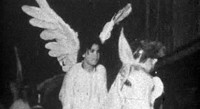




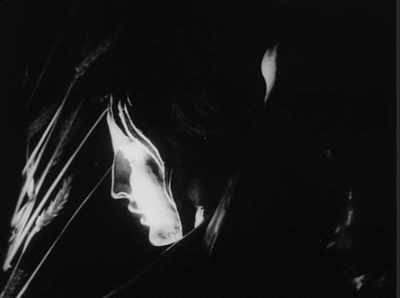
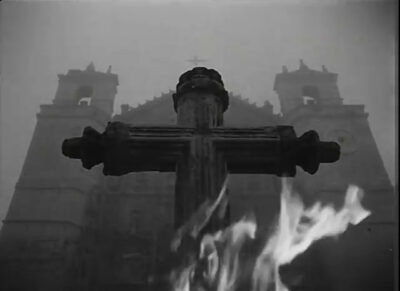





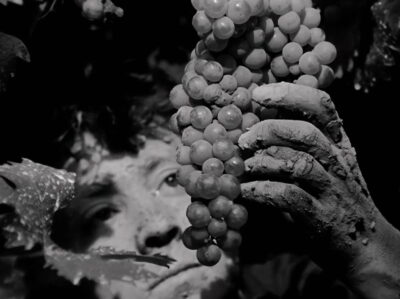
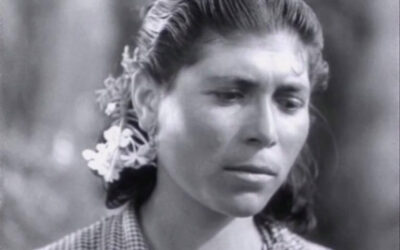





____
Further
José Val del Omar Website
JVDM @ IMDb
José Val del Omar’s Tríptico Elemental and Other Experiments from Spain
SÉANCE ART & CAMÉRA : JOSÉ VAL DEL OMAR
El genial naufragio de Val del Omar
José Val del Omar @ MUBI
JOSE VAL DEL OMAR COLLECTION
VAL DEL OMAR: ELEMENTAL DE ESPAÑA
José Val Del Omar @ cineastes
Dos o tres cosas que (ahora) sabemos de Val del Omar
Las Misiones Pedagógicas de José Val del Omar
José Val del Omar @ Criterion Forum
José Val del Omar, pionero del cine documental español
Val del Omar y las Misiones Pedagógicas
VAL DE OMAR ‘Desbordamiento de Val del Omar’
José Val del Omar: una pedagogía de la visión
Art Education, Visual Images, Technologies and Cultural Contexts from José Val del Omar (I)
José Val del Omar: “Tríptico elemental de España” (II)
____
Extras
la retrospectiva : desbordamiento de VAL DEL OMAR – En Proceso
Explicación Diafonía en “Ojalá Val del Omar”
Desbordamiento de Val del Omar, Virreina-Centre de la Image
VAL DEL OMAR & EL NIÑO DE ELCHE (NOOK, BCN, 22-11-2014)
Lagartija Nick x Val del Omar
__________
Óptica biónica energética ciclo-tactil
by José Val del Omar

Enunciado
Sin relación alguna con la utilización habitual de los objetivos anamórficos en cinematografía (con finalidades concretas de cambio de formato entre el área del fotograma impreso en la cinta y el área de la pantalla donde se reproduce) la óptica cilíndrica, con su distorsión astigmática fundamental en permanente giro lento de su eje anamórfico, permite obtener un efecto de anticipación original, de verdadera trascendencia histórica en nuestra cultura.
Statement
Without any relation to the usual use of anamorphic lenses in cinematography (with specific purposes of changing format between the area of the frame printed on the tape and the area of the screen where it is reproduced), cylindrical optics, with its fundamental astigmatic distortion in permanent slow rotation of its anamorphic axis, allows obtaining an effect of original anticipation, of true historical significance in our culture.
Explicación
Nuestra civilización canaliza y transfiere por dos dimensiones, imágenes que tienen tres. Este es el caso de los dibujos murales, de los lienzos pictóricos, de las estampas de los libros y de las pantallas del cine y de la televisión.
Ante estas representaciones distorsionadas, por la incidencia generalmente oblicua de nuestra mirada sobre el plano base en que las imágenes se presentan, el observador actual las ecualiza espontáneamente.
(El hombre actual, sumergido en el mundo de tales representaciones culturales, ejercita de forma permanente, espontánea e insensible, una cibernética psico-fisiológica de reconstrucción correcta de la perspectiva real).
Explanation
Our civilization channels and transfers through two dimensions, images that have three. This is the case of wall drawings, pictorial canvases, prints in books and cinema and television screens.
Faced with these distorted representations, due to the generally oblique incidence of our gaze on the base plane in which the images are presented, the current observer spontaneously equalizes them.
(Today’s man, immersed in the world of such cultural representations, permanently, spontaneously and insensitively exercises a psycho-physiological cybernetics of correct reconstruction of the real perspective).
Anticipación
A este hábito cibernético nosotros nos anticipamos por medio de un artificio óptico biónico, que permite ofrecer a la percepción visual del espectador, unas imágenes cuyo eje de distorsión astigmática gira en acuerdo con su deseo de contornear hasta adquirir, por reciclaje, consciencia palpable del mundo material representa do en las imágenes.
La presencia interferente de esta óptica energética (precisamente por la distorsión astigmática, en giro uniforme constante), nos permite gozar de un fenómeno extraordinario de pretensión tactil –(estéreo-biológica)– de nuestra mirada.
Anticipation
We anticipate this cybernetic habit through a bionic optical device, which allows us to offer the viewer’s visual perception images whose axis of astigmatic distortion rotates in accordance with their desire to contour until acquiring, through recycling, palpable awareness of the world. material represented in the images.
The interfering presence of this energetic optic (precisely due to the astigmatic distortion, in constant uniform rotation), allows us to enjoy an extraordinary phenomenon of tactile pretension – (stereo-biological) – of our gaze.
En resumen
Nos encontramos sumergidos en una cultura de representaciones visuales distorsionadas, y constantemente, haciéndonos cargo de ellas, ejercitamos el automatismo de una ecualización mental.
Por ello, al anticiparse nuestro mecanismo biónico a la espontánea cibernética del espectador, provocamos que éste, confundiendo movimiento mecánico óptico externo con su energética visual, se lo apropie, sufra el error, goce la ilusión de desplazarse alrededor de las imágenes; y el hecho de esta sucesión de distorsiones producidas por el giro constante de un eje astigmático le estimula a intuir la imagen central, correcta, fotogramétrica, virtual, no aparecida en la proyección.
Colegas participantes en el XII Congreso UNIATEC que se celebra en una ciudad meridiano fronteriza oriente occidente:
tengo a honor ofrecer,
como libre representante de las investigaciones españolas sobre
Picto Lumínica Audio Tactil,
un descubrimiento que les invitará a una reflexión colectiva,
de trascendencia histórica en el parámetro de las transferencias visuales.
Nacido en una tierra vértice común de tres continentes, pues allí razonó Europa,
soñó África
y se impulsó el descubrimiento de América,
encendido por esta confluencia,
–hoy convertida en cuna de serenidades–,
soles y lunas volando sobre Granada,
me han permitido vislumbrar el siguiente fenómeno,
que muy bien había podido pasar a Ustedes inadvertido,
al estar todos nosotros sumergidos en culturas en las que permanentemente se ejercita,
igual que respiramos el aire.
Constantemente, transferimos a las dos dimensiones de una superficie más o menos plana,
–llámese mural, lienzo pictórico, página impresa de libro o periódico, o en pantallas de cine o de televisión–,
imágenes que requerirían no las dos, si no las tres y hasta las cuatro dimensiones.
Tan estrecha canalización de unidades informativas,
nos obliga, constantemente,
a la hora de ser comunicadas estas páginas o planos,
a que todo… espectador desarrolle un mecanismo humano psico-fisiológico, una cibernética de ecualización y restitución.
Tratando de fijarles, claramente, esta idea,
observen … que el eje de visión ideal de la pantalla de un cine,
se encuentra en la cabina de proyección,
pero el público siempre está en un lugar de la sala,
donde, si hiciéramos desde aquel sitio una fotografía de la pantalla, quedaríamos perplejos al comprobar la brutal distorsión que absorbemos, y sin darnos cuenta, anulamos.
Igual ocurre con la convexa pantalla del televisor,
con las curvadas páginas de los libros,
con la percepción de las pinturas en los muros o colgadas en éstos, y con los techos planos o curvados sobre los ámbitos.
En general nuestra mirada no suele caer con una incidencia perpendicular, si no oblicua y a veces muy oblicua,
sobre las superficies donde se nos ofrecen las imágenes;
y ello nos obliga al desarrollo de una cibernética de compensación,
que no percibimos por encontrarnos constantemente ejercitándola.
Gracias a la energía lumínica, complementada con la sensibilidad óptica, hemos realizado una extensión del tacto.
Es conveniente observar “que un ciego,
al querer darse cuenta de la forma de un objeto, extiende las manos hacia su superficie,
las desplaza casi en diagonal, rodeándolo, contorneándolo una y otra vez
hasta conseguir una imagen virtual satisfactoria”.
Esto escribí en una revista especializada de Madrid, hace 48 años.
Posteriormente, en la reunión mundial de expertos cine-TV convocada por UNESCO en 1955,
presenté mi “Teoría de la Visión Tactil”;
y más tarde, en 1961 obtuve en el festival de Cannes y gracias a la sensibilidad de Jean Vivié,
la “mención técnica”
por la práctica lumínica en mi filme Fuego en Castilla.
Discúlpenme, si les he marcado tres puntos del árbol genealógico que acredita el presente fruto, de una cultura experimental;
y al que considero superior decisivo.
En esta hora en que la Holografía, con su gran logro estéreo, nos despega, definitivamente, de la monoperspectiva,
he concebido un Artificio Biónico mediante el cual,
el creador de la comunicación visual picto-lumínica
se anticipa a los deseos del espectador,
tomando por base la inquietante y atractiva distorsión astigmática de las imágenes.
Originariamente, tal artificio, lo orienté
a marcar el mérito artístico de las imágenes
hasta ahora, culturalmente, transmitidas en dos dimensiones;
en particular las pictóricas y fotográficas;
aunque la ci[ne]mática del cine y de la televisión puedan utilizarlo, enriqueciendo, con toda seguridad, sus mensajes.
Tomando por base la distorsión de imágenes
–a la que ya estamos acostumbrados–,
nuestro artificio biónico también ofrece la proyección de imágenes en distorsión astigmática,
pero con la particularidad de presentarlas bajo el movimiento de giro lento y permanente de su eje astigmático.
Con este artificio biónico energético ciclo tactil,
la proyección –repito– con el movimiento de giro lento y permanente de su eje astigmático,
ofrece un efecto de gran atractivo y simpatía analógica
con los brazos y las manos del espectador palpando el contorno,
en repetido acto tactil, elemental y espontáneo.
El espectador, sumando esa distorsión,
en permanente desplazamiento concéntrico,
acumulando en su mente las consecutivas
posiciones del eje astigmático, poco a poco termina anulándolas;
y de tal reciclaje tactil, nace una nueva especie de “modulación cruzada”; en su imaginación una imagen virtual,
en la que se presiente la imagen real fundamental y escamoteada.
Señores Colegas: Es posible que más de uno de Vds. prefieran,
por estar más introducida,
la clásica actual imagen fotogramétrica congelada.
Yo me permito suplicarles, dada la evolución filosófica e instrumental de los “medios”,
una reflexión íntima y desapasionada.
Ya vivimos en un mundo que se siente sin pies ni suelo,
casi flotando en cero gravedad,
donde se anuló tiempo, espacio, perspectiva y secuencia, según los conceptos hasta ahora admitidos.
Se nos habla, no sólo de participación,
sino también de aprojimación del espectador.
La fórmula de mantener en giro lento un objetivo anamórfico, de tan elemental… pierde valor;
pero no olviden que uno de los grandes pasos del cinema, consistió en que, un buen día,
a un señor se le ocurrió levantar el trípode de la cámara
y acercarla a la cabeza de uno de los actores
de una escena que se fotografiaba en todo su conjunto.
De la espontánea estereografía
debida a nuestra visión binocular
y desde el desplazamiento personal cercando
atenazante el contorno del sujeto de nuestra visión,
hoy, al empleo de ópticas de ángulo variable
y al empleo más racional de los rayos luminosos, como dedos que palpan… podemos incorporar,
nacida de nuestro genérico impulso de posesión,
y para un nuevo gozo visual tactil,
esta nueva lírica óptica.
In summary
We find ourselves immersed in a culture of distorted visual representations, and constantly, taking charge of them, we exercise the automatism of mental equalization.
Therefore, by anticipating our bionic mechanism to the spectator’s spontaneous cybernetics, we cause him, confusing external mechanical optical movement with his visual energy, to appropriate it, suffer the error, enjoy the illusion of moving around the images; and the fact of this succession of distortions produced by the constant rotation of an astigmatic axis stimulates him to intuit the central, correct, photogrammetric, virtual image, not appearing in the projection.
Colleagues participating in the XII UNIATEC Congress held in a meridian city on the east-west border:
I have the honor to offer,
as free representative of Spanish investigations on
Picto Lighting Audio Tactile,
a discovery that will invite you to collective reflection,
of historical significance in the parameter of visual transfers.
Born in a land common vertex of three continents, because Europe reasoned there,
Africa dreamed and the discovery of America was promoted,
lit by this confluence,
–today converted into a cradle of serenities–,
suns and moons flying over Granada,
They have allowed me to glimpse the following phenomenon,
which very well could have passed unnoticed by you,
As we are all immersed in cultures in which we constantly exercise,
just like we breathe the air.
Constantly, we transfer to the two dimensions of a more or less flat surface,
–call it a mural, a pictorial canvas, a printed page of a book or newspaper, or on movie or television screens–, images that would require not two, but three and even four dimensions.
Such a narrow channeling of information units,
forces us, constantly,
When these pages or plans are communicated,
for every… spectator to develop a psycho-physiological human mechanism, a cybernetics of equalization and restitution.
Trying to fix this idea clearly,
Note… that the ideal viewing axis of a cinema screen,
is located in the projection booth,
but the audience is always in one place in the room,
where, if we took a photograph of the screen from that place, we would be perplexed to see the brutal distortion that we absorb, and without realizing it, cancel.
The same happens with the convex television screen,
with the curved pages of books,
with the perception of the paintings on the walls or hanging on them, and with the flat or curved ceilings over the areas.
In general, our gaze does not usually fall with a perpendicular incidence, but rather obliquely and sometimes very obliquely,
on the surfaces where the images are offered to us;
and this forces us to develop cybernetic compensation,
that we do not perceive because we find ourselves constantly exercising it.
Thanks to light energy, complemented by optical sensitivity, we have achieved an extension of touch.
It is convenient to observe “that a blind man,
wanting to realize the shape of an object, he extends his hands towards its surface,
He moves them almost diagonally, surrounding him, contouring him again and again.
until a satisfactory virtual image is achieved.”
I wrote this in a specialized magazine in Madrid, 48 years ago.
Later, at the world meeting of film-TV experts convened by UNESCO in 1955,
I presented my “Theory of Tactile Vision”; and later, in 1961 I obtained at the Cannes festival and thanks to the sensitivity of Jean Vivié, the “technical mention” for the lighting practice in my film Fuego en Castilla.
Excuse me, if I have marked three points of the family tree that accredits the present fruit, of an experimental culture; and whom I consider decisive superior.
At this time when Holography, with its great stereo achievement, definitively takes us away from monoperspective, I have conceived a Bionic Artifice through which, the creator of picto-luminous visual communication anticipates the viewer’s desires, based on the disturbing and attractive astigmatic distortion of the images.
Originally, such an artifice, I directed it
to mark the artistic merit of the images
until now, culturally, transmitted in two dimensions;
particularly the pictorial and photographic ones;
although the cinematics of cinema and television can use it, certainly enriching its messages.
Based on image distortion
–to which we are already accustomed–,
Our bionic device also offers the projection of images in astigmatic distortion,
but with the particularity of presenting them under the slow and permanent rotating movement of its astigmatic axis.
With this tactile cycle energy bionic artifice,
the projection – I repeat – with the slow and permanent turning movement of its astigmatic axis, offers an effect of great appeal and analog friendliness with the spectator’s arms and hands feeling the contour, in a repeated tactile, elemental and spontaneous act.
The viewer, adding this distortion, in permanent concentric displacement,
accumulating in his mind the consecutive positions of the astigmatic axis, little by little it ends up canceling them; and from such tactile recycling, a new species of “cross modulation” is born; in his imagination a virtual image, in which the fundamental and hidden real image is sensed.
Dear Colleagues: It is possible that more than one of you prefers,
because it is more introduced,
the current classic frozen photogrammetric image.
I allow myself to beg you, given the philosophical and instrumental evolution of the “media”,
an intimate and dispassionate reflection.
We already live in a world that feels without feet or ground,
almost floating in zero gravity,
where time, space, perspective and sequence were annulled, according to the concepts until now accepted.
We are told not only about participation,
but also the approach of the viewer.
The formula of keeping an anamorphic lens in slow rotation, so elementary… loses value;
but do not forget that one of the great steps of cinema was that, one fine day,
It occurred to a man to raise the camera tripod
and bring it closer to the head of one of the actors
of a scene that was photographed in its entirety.
From spontaneous stereography
due to our binocular vision
and from personal displacement surrounding
gripping the outline of the subject of our vision,
today, to the use of variable angle optics
and to the more rational use of light rays, like fingers that feel… we can incorporate,
born from our generic impulse to possess,
and for a new visual tactile joy,
this new optical lyric.
___________
10 of José Val del Omar’s 13 films
____________
Elementary Triptych of Spain (1982)
‘Elementary Triptych of Spain is the last film project by José Val del Omar (Granada, 1904 – Madrid, 1982). The idea arose in the last stages of his life and was aimed at creating a trilogy using his three ‘elemental pieces’: Aguaespejo granadino [Water-Mirror of Granada] (1955), Fuego en Castilla [Fire in Castille] (1960) and Acariño galaico [Galician Caress] (1961). The connecting link in the trilogy, which was filmed in different times and places, is spelled out in a prologue entitled Ojalá [If Only] (1980), which establishes the key points with which to read the whole. Beyond all motivation, a constant approach can be found in Val del Omar’s work: circling round, returning again and again to constant features. And this work must be seen as a whole, where technical trials, formal experimentation and the creative process merge. The Triptych, therefore, must be seen as one step more in the trajectory of an oeuvre that, while unfinished and open, always turns on itself and, at the same time, is a response to the prevailing audiovisual forms. Val del Omar worked on the conception of the Triptych from 1981 until his death in 1982, particularly on finishing Acariño galaico and preparing Ojalá. Throughout this process, he decisively influenced the presentation of his work by the curators of the Anthology of Avant-Garde Film in Spain, Manuel Palacio and Eugeni Bonet. Val del Omar was committed to presenting his Triptych with Acariño galaico and Ojalá, but in the end, he was not able to finish these works and only Aguaespejo granadino and Fuego en Castilla were screened. The Triptych, then, remains unfinished, but its three pieces, the unedited images and the loose notes conserved today make it possible to establish a unique relationship in Val del Omar’s work: beyond spectacle, in a dimension where the artistic experience creates its own conditions of appreciation, before it reaches the screen, but projecting its light onto our gaze. The time has come to our eyes.’ — Museo Nacional Centro de Arte Reina Sofía
Excerpt
_____________
Variations on a pomegranate (1975)
‘In the late 1970s Val del Omar set up a laboratory named PLAT (Picto – Luminic – Audio – Tactile) in Madrid, and continued experimenting with video and multimedia equipment. Variations On A Pomegranate is the only preserved piece from this period.’ — Experimental Cinema

_____________
Óptica Biónica (1974-1982)
Slide projector. Bionic optic. Truca (with chromatic adaptator and liquid adaptator).
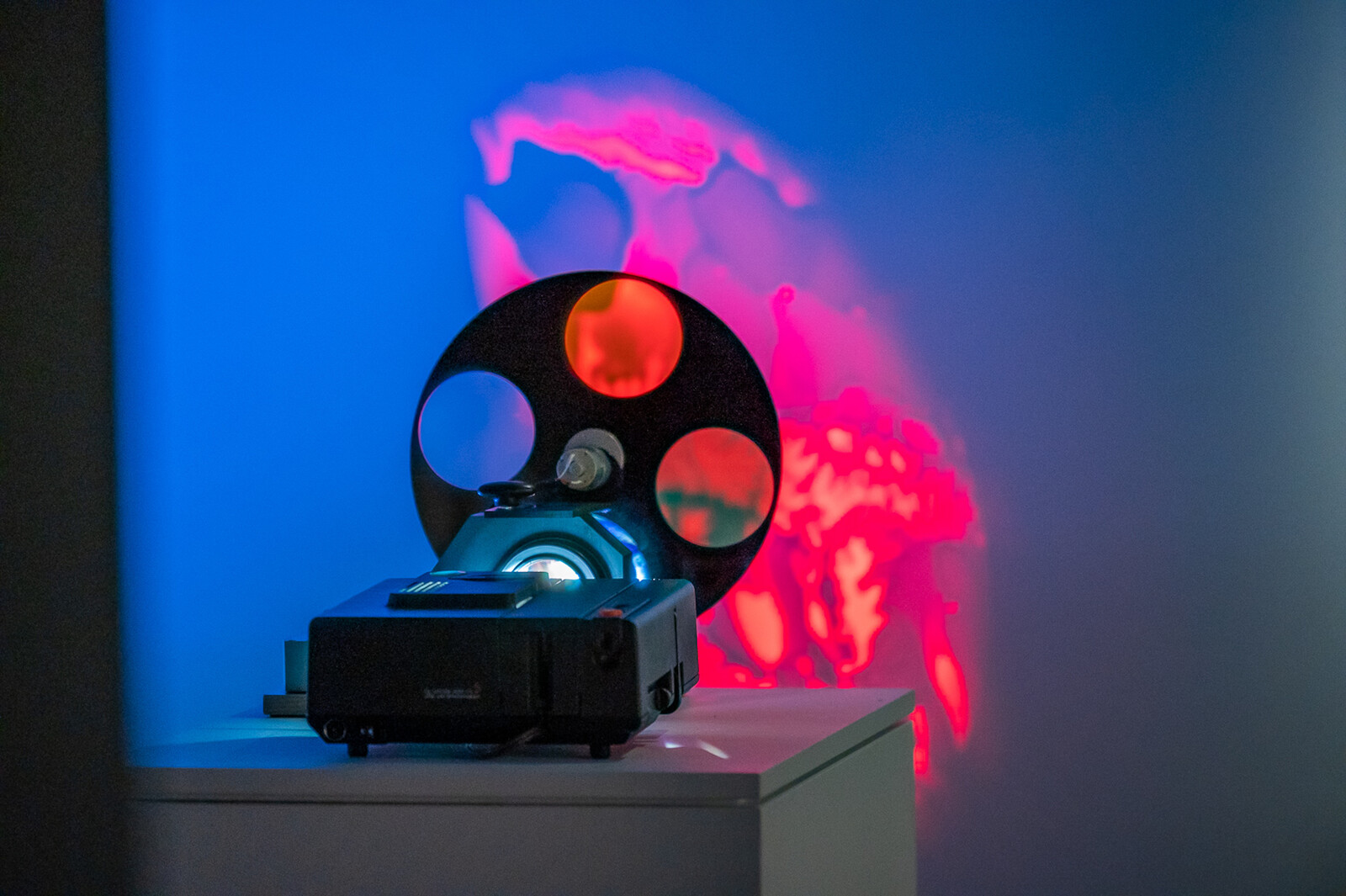
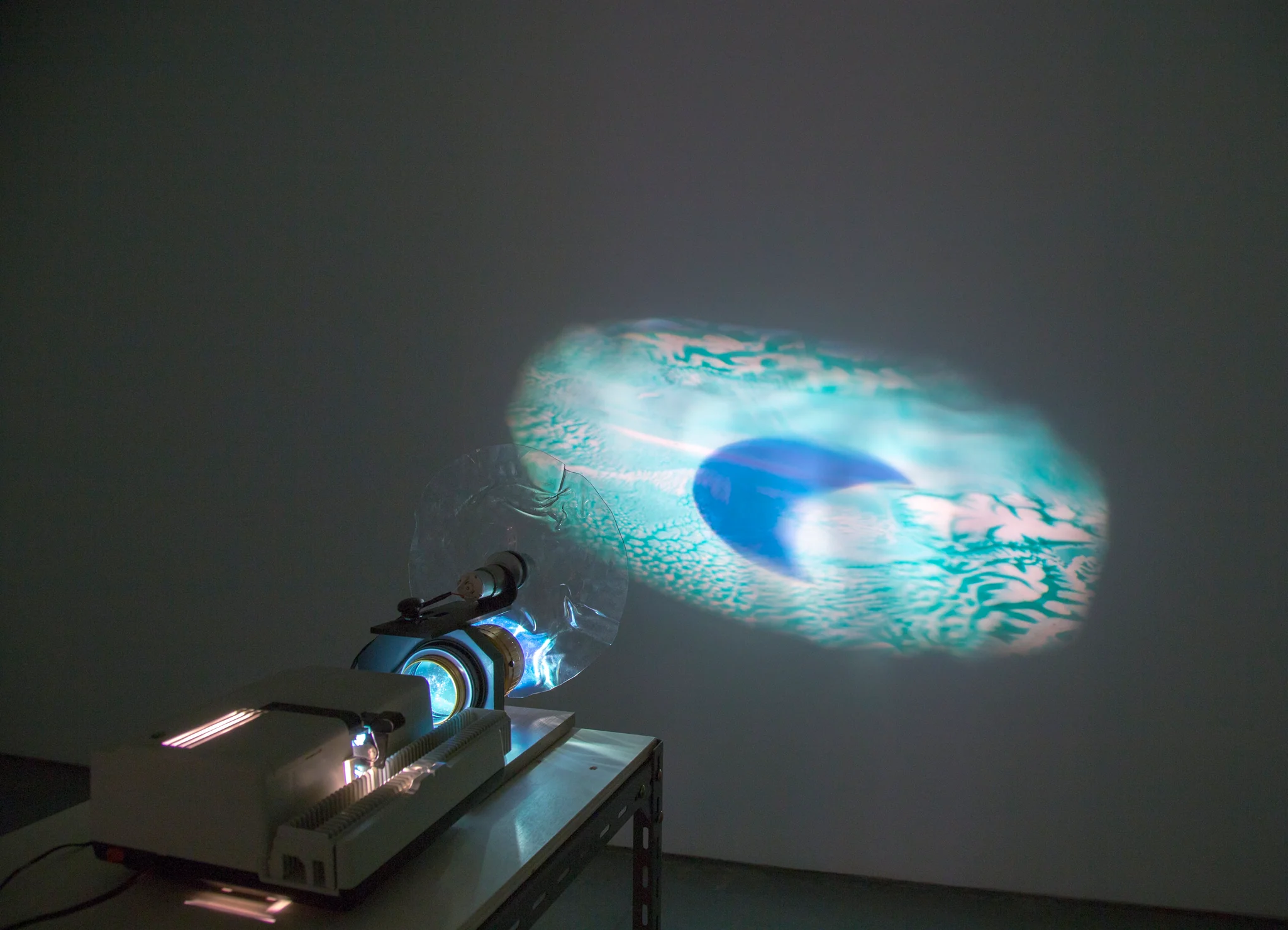
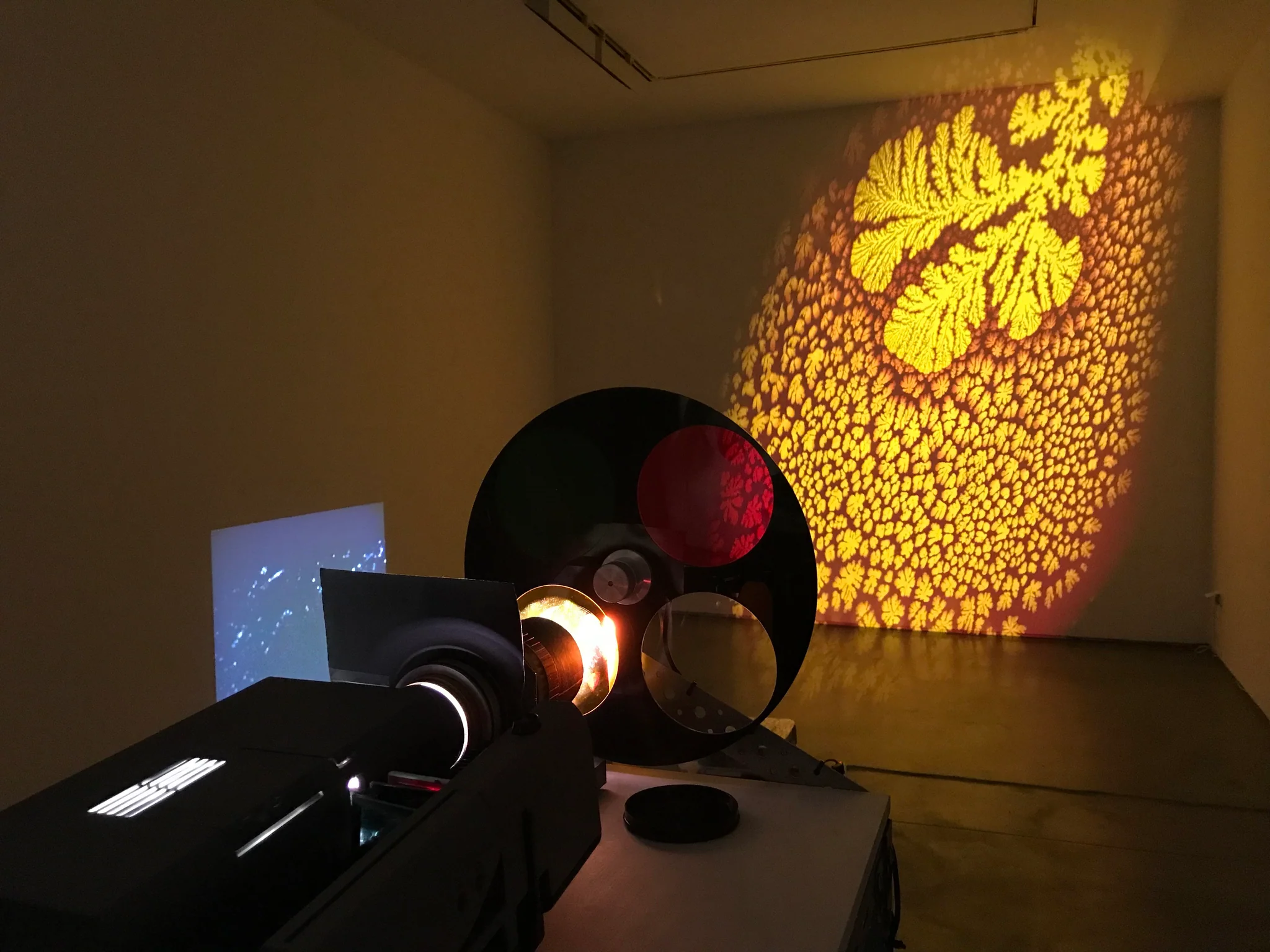
_____________
Galician Caress (Of Clay) (1961, 1981-82, 1995)
‘This film was reconstructed and completed in 1995 by Javier Codesal for the Filmoteca de Andalucia, from the montage and the sound that Val del Omar had outlined before his death, after having returned to a project abandoned twenty years before with the incorporation of significant additions (above all in the soundtrack). Val del Omar’s notes show that, as he typically did, he had other alternative titles in mind, such as “Acariño de la Terra Meiga” (Caress of the Magic Land), “Acariño a nosa terra” (Caress of Our Land), or “Barro de ánimas” (Clay of Souls), and that in the final phase of the unfinished project he wanted to add a second sound channel – following the diaphonic principle, and using electro-acoustic techniques – consisting of ambient material that he intended to record at the first screenings of the film in the very places and to the very people that were its origin: its “clay”.’ — letterboxd.com
Excerpt

______________
Fire in Castilla (Tactilvision from the Moor of the Fright) (1961)
‘Fuego en Castilla is the second of Val del Omar’s trilogy Tríptico elemental de España (‘Elemental Triptych of Spain’), a tactile visual poem begun in 1952 that brilliantly juxtaposes the modern and the folkloric, exploring myth, mysticism, religious imagery, fear, death, fire, rites and delirium. Each short film is set in a different region of Spain and focuses on an emblematic, essential element: water, fire and mud, for Granada, Castile and Galicia respectively. Fuego en Castilla starts with a line written by Lorca about the rituals of Holy Week: “In Spain, every spring Death comes and lifts the curtains.” After the explosion of light and sound in Granada in the first part, the film plays with chiaroscuro, shadow and light, creating movement using the pulsating light technique to bring to life the religious sculptures of Holy Week kept in the museum in Valladolid. Effectively, the symbiosis of human and sculpture will occur in Galicia, where water (Granada) and fire (Castile) will turn the human into a clay figure – a purification by fire.’ — bfi
the entire film
___________
Aguaespejo granadino (1955)
‘This video is based on an excerpt from Aguaespejo Granadino (1953-55) by José Val del Omar. The soundtrack on this video is a musical adaptation composed -as tribute to Val del Omar- by Joaquín Medina Villena for clarinet and electronic, with exclusive authorization from “Archivo Val del Omar”.’ — Joaquín MEDINA VILLENA
Excerpt
the entire film
___________
Película Familiar (1938)
‘Película Familiar is a family album in motion. It shows the director’s fondness for portraiture, here contrasted with his fascination with certain energetic or honest facial expressions. As a final kiss – Barthes’ punctum – intimate and indescribable.’ — MUBI
the entire film
____________
Vibración De Granada (1935)
‘This is a short film that, although a documentary in appearance, has very little to do with the generic conventions of that form. It would seem, then, that what we have here is the embryo of what he was subsequently to call the ’’elementary’’: an abstract or lyrical modality…’ — MUBI
Excerpt
Excerpt
_____________
Fiestas Cristianas/Fiestas Profanas (1934)
‘Silent documentary-film about Easter and Spring Festival in the region of Murcia (Spain) in the period between 1930 and 1935 during the 2nd Spanish Republic.’ — Cuneta
Excerpt
the entire film
_____________
Estampas 1932 (1932)
‘Scenes 1932 is a collective piece that reflects the work of those Pedagogical Missions from the II Spanish Republic that for many years took culture (not out of a didactic will but more of a recreational one) to the most forgotten corners of Spain. It is undoubtedly a vital experience that became crucial for the work and thinking of Val del Omar, who took part in them.’ — BAFICI
the entire film
*
p.s. Hey. ** David Ehrenstein, Yes, very sad about Davies. But great about your piece on him. I look forward to reading it. Everyone, maestro David Ehrenstein wrote a piece on the sadly recently departed filmmaker Terence Davies a few years ago entitled ‘A Director’s Struggle With Art and His Beginnings’ that’s no doubt extremely interesting. You can read it here. ** _Black_Acrylic, Oh, I don’t think you missed the point at all. I must admit I’m somewhat curious about that Savile biopic so I’ll see if it shows up in some accessible (to me) place. Mums know best, right, ha ha? ** Valno B., Hi, Valno. I don’t have a VHS of Shozin Fukui’s METAL DAYS, but, if I did, I would certainly at least rip it for you. ** T, Hi. Yeah, the week is going to be eaten by a work marathon, I can tell. Collectif du Jeune Cinéma starts this week? Yikes. I’d love to, but let me see how the work or rather the work schedule goes. At the moment we’re working into the evenings. But, yeah, I’ve been looking forward to hitting up the festival. With you would be ultra. Otherwise, ASAP, def. ** Bill, Yes, sad business about death swallowing TD. Glad you liked the array. I think I did have ‘Round Table’ on here before in some thematic context or other, yes. Excited to hear/think about that gears-using project, and I highly hope you sort it or sort a workmate. Pray tell. Yay for the blog’s timeliness. May it stand. I don’t think I had the Susan Taubes book here. It doesn’t sound familiar. I’ll look into it. Thank you! ** Mark, Hey! Awesome about the ToF festival. I’ll check around for pix or vid or something. And about Printed Matter + the zine. Everyone, Should you be interesting in scoring a copy of Mark’s (and Jose’s) amazing zine about moi — ‘For the Love of Dennis Cooper’ — you can do so via Printed Matter aka here. Infinite thanks, you guys. ** Cody Goodnight, Hi, Cody. I’m fine. So sorry about the insomnia. It’s the worst, the almost absolute worst. Based on your playlist, your brain is functioning in a highly proper manner at least. I’m in film editing mode, so that’s all I have to report on my end. Big day, better night! ** Right. The Museum of the Moving Image in NYC recently held a retrospective of José Val del Omar’s amazing and often difficult to access works, which seems to have inspired me to restore my old day about him. And I hope it will suit whatever you have planned or maybe not planned for today. See you tomorrow.




 Now available in North America
Now available in North America 
Hi!!
And here I am, all recharged after some family time! Really, these last couple of days were much needed – and really great. What’s happening on your end? How are you?
Ah, I should’ve guessed – that we’d both fall in love with Dangling Carrot’s Grisly Garden! How about this: love relocates it to Paris but builds a small portal somewhere within it that allows me to transport there whenever the mood hits. And, of course, he moves Twisted Dreams to Paris, too. If he’s already in the business of moving home haunts around, an additional one doesn’t make any difference.
I’d like to humbly ask love to put such a button on my bookshelves as well. Love walking into a comic book store only to realize that they’re giving small booklets of YAOI away for free, Od.
Dennis, Well, it’s back to work today. I didn’t do much over the weekend except eat too much and then make up for it on Monday with some extra exercise. Watched football, of course. Otherwise, I just slept a lot. I was really tired. Oh, and we got some parts of David’s car fixed up. He’s trying to get it back on the road. Dude is still working and not missing any days. Fingers crossed.
Saturday night, I did sleep on a pair of scissors. Had thrown them in my bed and forgot to take them out and put them away. The ends are blunt, so I didn’t stab myself.
Last night, I slept on my wallet.
What the fuck?
Ahh! I am totally saving yesterdays page so I can look at all of it sometime when im not busy. I love machines! Plus it has a lot of art pieces that I admire. Insane! Wow! Totally not losing it. I get excited too easily when it comes to machines.
Question: What is your favorite kind of gear + gear motion? Mine is the obvious scotch yoke. I really do like Sun Yuan and Peng Yu, I was transfixed with them and still am to some degree. Of course their famous “Cant help myself” is the one that kind of got more people into them because it went viral or something but now that new audience is getting introduced to their older controversial stuff, like the cadaver baby, and the hanging snake one. Uh oh.
I do really think there should be some sort of system in place for the use of the consenting dead to have their body used in art. Not like ya know fucked up, necrophilic things etc+ but like living ecorches and stuff. Ya know?
The funeral industry is more messed up than people may think. Taking advantage of the vulnerable. Like cremation was once this very taboo subject. Also, though respectively rare, the violation of a corpse post-mortem is more common than not.
I think I want to go to mortuary school because I cant handle the living but the death industry is always blooming.
Anyways! Macabre rants! Sorry. if I really like something I just go on.
My favorite piece by Sun and Peng is “Fallen Angel” The uncanny silicon statue.
I always liked the idea of art depicting calamities and tragedies in the purest most darkest dorms where the style is stripped down to its starkest realest forms.
Like a death scene, for example, a realistic silicon/ resin installation of some kid/young person dressed in broken angel wings and a costume and he’s just splattered on the ground where his face is unrecognizably disfigured. Before the piece there’s like an epigraph and it says something somber, along with a “picture” of the boy before the fall The piece would be a prosaic take on children suicide, or, even just suicide itself. The way a child see’s the world that, even in a state of depression and deep pain, the words “death” provide them a comfort that lustrates a false sense of beauty, like an obligation. But death is real, and its forever, and no one is eternal, and no one looks peaceful after they jump off a building.
So its just saying life is beautiful and rare, in a really morbid way. Bleakly deconstructing all the ways people characterize dying young and death.
Was that too long? I’ve never actually told anyone my Angel idea. Maybe too morbid.
but then again. I think I was still coming off an edible when I wrote this so maybe the art idea is substantially quixotic.
Ooh I was charmed by the Película Familiar film there. Such a delightful thing! I feel as though Jose Val del Omar would be doing big things were he around to make films in our time.
I’m not familiar with Jose Val del Omar, and missed this post the first time around. Really like the projections, lots of beautiful shots in the clips. Diaphony is kind of an odd idea.
The gears thing is slightly complicated by the fact that ideally, I’d like it to be all-mechanical. I’m sure what I need is all common practice, I just need to find the right resources.
Bill
Hi! I did that thing again where I’m somehow learning a valuable life lesson
But it just seems like I’m doing a bunch of nothing and not talking to anyone but I’m back now and definitely changed somehow for the better! What’s up have you finished editing the movie? What’ve you been eating lately? Also I had one of the best ideas of my life I’ll elaborate.
I’ve always wanted tattoos and could never come up with anything cool but I just thought about getting the titles of your books not as some weird like homage which I guess it still would be but just cause you picked really good impactful words for titles and the whole cycle you know what I’m talking you did it! Ive sorta begun mapping them out like I can so vividly see the try font somewhere on me probably right where my heart is just to be dramatic. My seemingly aesthetically perfect idea is the freshest thing I have to offer and a question which of your books has been the hardest to write? And I don’t wanna boil it down to the content only like maybe a eveytime you tried to write a page of one them the wind would blow or maybe it was super hot when you wrote one fill me in seems interesting! Ugh all that stream of consciousness aside I’m doing super good actually going to arcas cool new show tomorrow and suoer pre excited about it I’ll be back before and after it so I’ll probably be inspired enough to be more interesting! Brb and you stay well too!
Hello Dennis!
Val del Omar and Lagartija Nick, thank you! How are things going with your movie? I hope you can get the sound you want and everything is ready and ultra great before Friday. Tonight I’m going to try to see ‘Moffie’, good luck to me. Greetings!
Hi Dennis.
How are you? I’m ok. I slept better than I did, so I feel better. Val del Omar’s films look interesting, especially his early ones. Good luck with the editing! Going to watch Messiah of Evil tonight, and Daughters of Darkness tomorrow. Have a good day or night!
When I interviewed Davies in 2018, he seemed extremely unhappy. He said he thought being gay had ruined his life and that he hadn’t made any films set in the present because he was utterly baffled by the modern world.
I came across a very interesting baile funk producer yesterday, DJ Wesley Gonzaga. It’s really murky music combining vocals, synthesizers and percussion parts which shouldn’t fit together. (For party music, the drums are often barely audible.) I sense that I might like his music less if I understood Portuguese, given that his song titles and choice of imagery show a sexist streak.
Any news on post-production on the film? Did you find any information on Tribeca?
Thanks for this! I gave Aguaespejo granadino and Fuego en Castilla a watch. We’re shooting a short sexy spanking video this weekend and I got a lot of ideas from these. The short is for an #nsfw film festival happening in December here in LA. I’m aiming to do something much weirder than a typical fetish video 😉